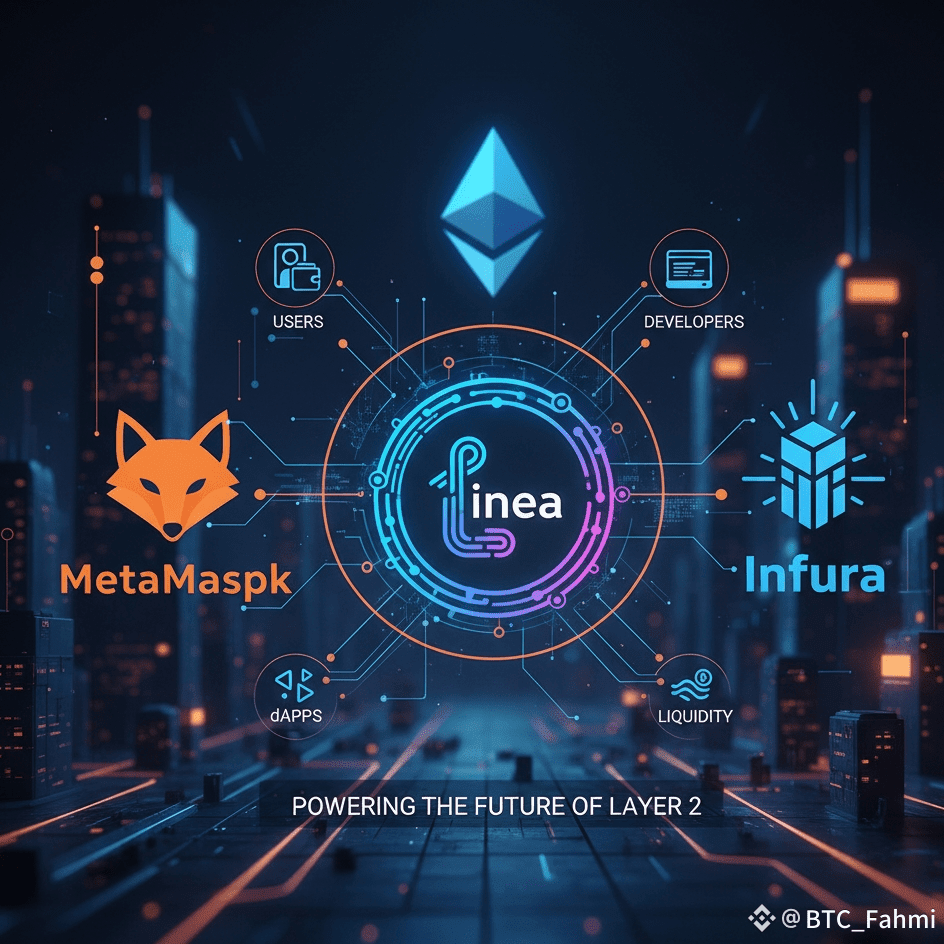
MetaMask and Infura are a big reason why Linea is growing. They make it easier for normal users. And developers to start using the network without extra steps or confusion. Linea is a Layer 2 network built on Ethereum using zkEVM technology. In simple terms it helps Ethereum handle more transactions with lower fees while still keeping Ethereum’s strong security. Linea is created by Consensys, the same company behind MetaMask and Infura, so everything is made to work smoothly together.
For regular users, MetaMask is how they first meet Linea. They don’t need to copy long RPC links or type chain IDs. In MetaMask, they can just pick Linea from the list of networks. Once it’s added they can send funds use DeFi apps. And try new dApps on Linea without learning a new wallet. This familiar feeling is important. It helps people move from centralized exchanges or other Layer 2s to. Linea without stress or confusion.
MetaMask’s extra features make Linea easier and more useful for users.Linea even more attractive. Things like the Portfolio view, swaps, and bridging tools all show Linea alongside other networks. That means users can see their Linea assets in the same place as the rest of their crypto. New projects launching on Linea usually work with MetaMask right away, so users don’t have to install special wallets or hunt for strange tools. As more dApps support Linea, more users join. As more users join more developers want to build there. This creates a positive cycle that helps the network grow.
On the developer side, Infura takes care of the technical work in the background. Instead of running their own Linea nodes.which costs time, money, and effort developers can connect to Linea using Infura’s ready-made endpoints. They can read data from the chain, send transactions, and listen for events, all through Infura. This lets teams build and launch apps much faster, whether they only use Linea or work across many blockchains.
Reliability is also very important. When gas fees on Ethereum rise and people move to Layer 2 networks like Linea, the traffic can increase very quickly. During token launches airdrops or big market moves, dApps can suddenly see huge spikes in usage. Infura helps apps stay online and responsive during these busy times. With Infura’s analytics and monitoring tools. Developers can track how their apps behave on. Linea fix problems quickly and improve performance based on real user activity.
When MetaMask and Infura work together everything gets even better. Developers can build apps where users switch between Ethereum mainnet. And Linea easily without really noticing any difference.Infura manages the backend work like handling cross chain activity. And keeping services running while MetaMask gives users a simple, familiar interface on the frontend. Linea feels like a natural part of the existing Ethereum toolset not a separate or complicated system.
In the long run, Consensys is building a complete stack: wallet (MetaMask), infrastructure (Infura), and Layer 2 network (Linea) all working as one. This means they can run campaigns such as airdrops, quests, and DeFi reward programs directly through MetaMask, powered by Infura and happening on Linea. Over time, this can help Linea become not just another scaling choice, but a main place where everyday Ethereum users go to explore, trade, and use dApps.
In short, MetaMask makes it easy for people to join and use Linea. Infura gives developers the tools and stability they need to build on it. Together they help turn. Linea from a promising idea into a real, active network with users, liquidit and steady growth.



